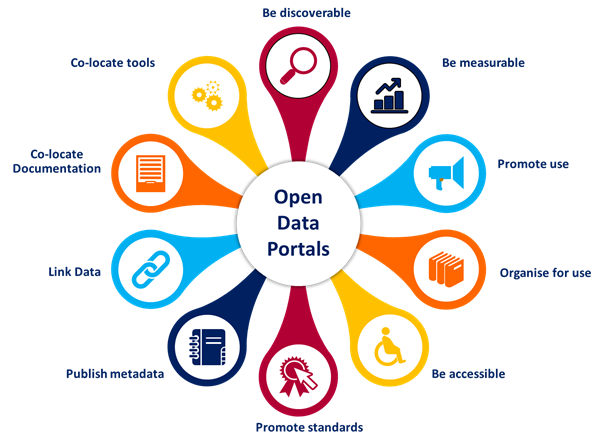Practical guide to building future proof Open Data Portals
The EU Member States are making visible progress with regard to their Open Data transformation journey, with many Open Data initiatives as well as portals being launched each year. However in order to ensure such data infrastructures remain relevant over time, a series of aspects should be considered and embedded in the design stages of any Open Data portal.
Portals play an essential role in the promotion of Open Data practices across within each country and region, as they represent central points to publish and access datasets. Their development however can be seen as a spill-over of the increased promotion and impact of Open Data. For this reason they have largely been seen as government-led initiatives, launched for the purpose of publishing government datasets - hence with the supply-side in mind, and less as a demand-driven approach. This drive by publishers and portal owners, often to meet mandates, can only take portals so far.
This report presents a Point of View of sustainability of Open Data infrastructures and recommends ten ways portals can be organised to add value over time. It represents an easy-to-use guide for portal owners in their efforts to understand what is required and expected of such infrastructures. With an ever growing and more and more diverse Open Data community, such changes should be addressed in a timely manner.
The report suggests the following 10-item list for portal owners to consider:
- Organising for use of the datasets (rather than simply for publication);
- Learning from the techniques utilised by recently emerged commercial data marketplaces; promoting use via the sharing of knowledge, co-opting methods common in the open source software community;
- Investing in discoverability best practices, borrowing from e-commerce;
- Publishing good quality metadata, to enhance reuse;
- Adopting standards to ensure interoperability;
- Co-locating tools, so that a wider range of users and re-users can be engaged with;
- Linking datasets to enhance value;
- Being accessible by offering both options for big data, such as Application Programme Interfaces, and options for more manual processing, such as comma separated value files, thus ensuring a wide range of user needs are met;
- Co-locating documentation, so that users do not need to be domain experts in order to understand the data;
Being measurable, as a way to assess how well they are meeting users' needs.

With these ten recommendations in mind, the report walks readers through the item list and provides examples of success stories for each section. The data portals of Finland, France, Ireland, Italy, Netherlands and Spain as well as the Open Data infrastructures existing at the European level (the EU Open Data Portal and the European Data Portal) are depicted amongst the best practice examples for user engagement, quality and usage metrics, promotion of re-use and standards, co-location of documentation, as well as linked data and data visualisation tools.
The ten recommendations are not to be understood as an abstract list, but more like a tool that ca be used in critically assessing the As-Is state of portals and taking an honest inventory. With the envisaged To-Be state in mind, portal owners should consider addressing front end issues to meet user needs, improving the engagement mechanisms with data providers not only to deliver the content in appropriate formats but also to share their domain knowledge and engaging with other portals to solve joint challenges. A recommendation in this regard is liaising with pan-European projects such as the European Data portal.
Do you want to find out more about how to ensure sustainability of Open Data portals and are interested in the featured best practice examples? Then dive deeper into our Point of View on Sustainability here!
